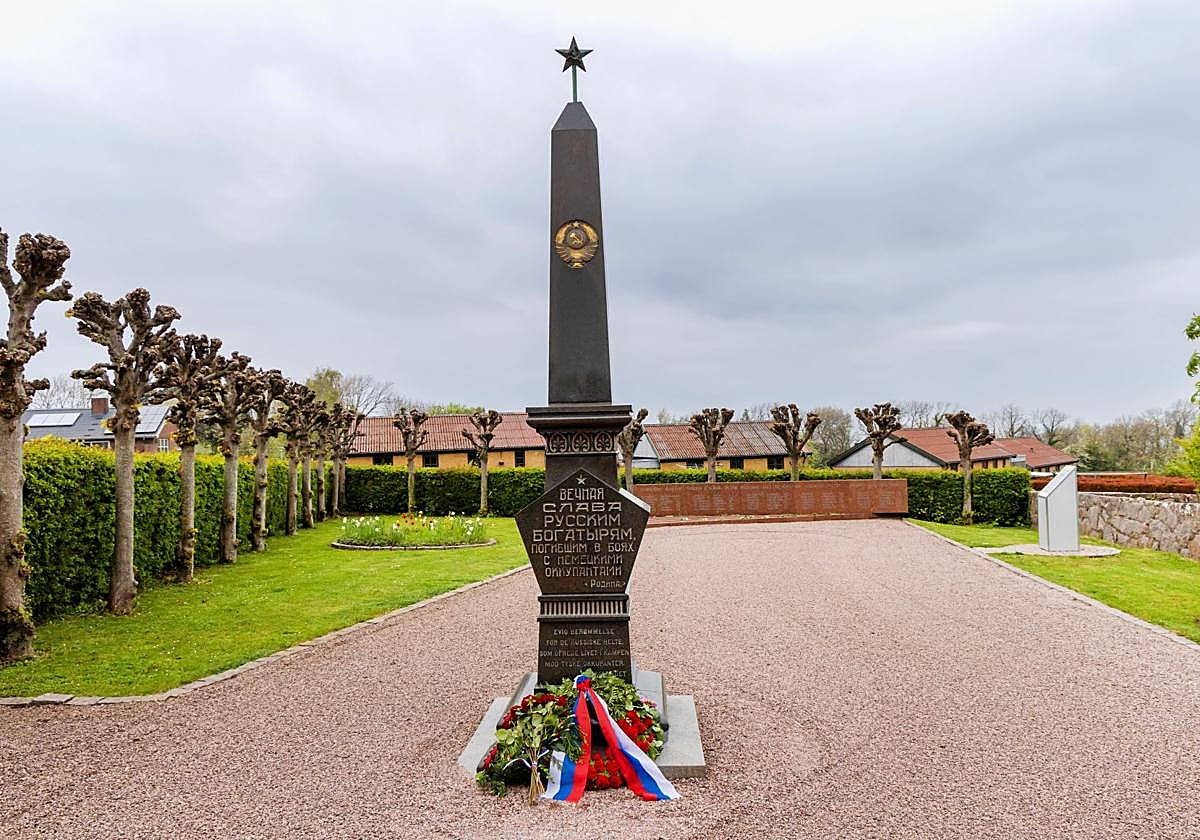An occupied island in the Baltic Sea
80 years since the end of the WWII ·
Victory in Europe Day is being celebrated this week. Meanwhile the Danish island of Bornholm remembers intensive bombing on 8 May 1945Alekk M. Saanders
Denmark
Friday, 9 May 2025, 15:05
On 5 May 1945 Denmark was officially liberated from five years of German control, and residents across the country removed the black curtains they had used to cover their windows during the bombing raids to burn fires with them in the streets.
Allied troops, represented mostly by Soviet soldiers, were released from prisons throughout the country and paraded through the streets of Copenhagen, Aarhus and other cities. At the same time, other Soviet soldiers were preparing to attack Bornholm, a strategically important island in the Baltic Sea.
Two days of bombing
Indeed, while Denmark was enjoying liberation, a German garrison (about 12,000 men) under Gerhard von Kamptz remained on the island of Bornholm. The German commander was reportedly given strict orders to defend the island against the Soviets and to surrender only to British troops, which happened in the rest of Denmark, but not on Bornholm. The British troops never came to Bornholm, but the Russians did…
On 7 May, a German anti-aircraft battery opened fire on planes with red stars which appeared and started intensively bombing the Bornholm towns of Nexø and Rønne.
Along with the bombs, leaflets were scattered around the island calling for the German commander to surrender. Kamptz refused to surrender, and on 8 May the Soviet planes continued bombing, leaving the island in ruins.
More than 800 houses in Rønne and Nexø were completely destroyed and about 3,000 were severely damaged. Although the towns had been evacuated, ten Bornholm residents and many Germans, including several volunteers from the Baltic countries, were killed in the bombing. Incidentally, Danish radio was not allowed to broadcast news of the two-day nightmare on Bornholm because it was thought that it would spoil the liberation festivities in Denmark.
Landing on the island
On 9 May, when the Soviet Union was celebrating its day of victory over the Nazis, Soviet troops landed on the island with ships entering the port of Rønne. After a short fight, the German garrison capitulated. Thus began eleven months of Soviet presence on Bornholm.
In the end, Stalin decided not to hold the Baltic island of Bornholm, preferring to keep the Baltic states within the Soviet sphere of influence. On 5 April 1946, the last Soviet troops left the island except 30 Soviet soldiers, who were buried in the local cemetery in Allinge.
A granite monument with Soviet symbols and the inscription ‘Eternal glory to the Russian heroes who gave their lives in the fight against the German occupiers. Fatherland 1945’ was erected.
While in many places in the Baltic States and Poland similar monuments have been removed, on Bornholm they still keep the monument intact.
The site tv2bornholm.dk (9.5.2024) wrote “as a provocation against the Russians, in both 2022 and 2023, vandals sprayed paint on the grave monument. The painting of the tomb monument is most likely due to Russia's invasion of Ukraine. In 2022, the monument was painted over with the Ukrainian colours - yellow and blue.”
It is also reported that the monument was not completely free of vandalism in the year 2024, when it was covered in paint and a wrought iron gate with Soviet hammer and sickle symbols was stolen.
